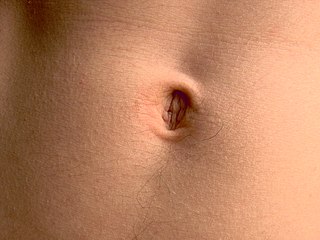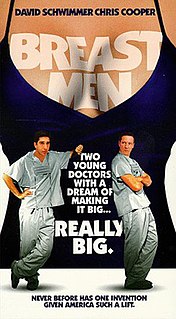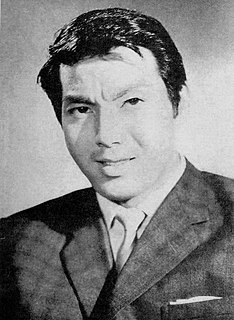Related Research Articles

Plastic surgery is a surgical specialty involving the restoration, reconstruction, or alteration of the human body. It can be divided into two main categories: reconstructive surgery and cosmetic surgery. Reconstructive surgery includes craniofacial surgery, hand surgery, microsurgery, and the treatment of burns. While reconstructive surgery aims to reconstruct a part of the body or improve its functioning, cosmetic surgery aims at improving the appearance of it.

The navel is a protruding, flat, or hollowed area on the abdomen at the attachment site of the umbilical cord. All placental mammals have a navel.

Mammaplasty refers to a group of surgical procedures, the goal of which is to reshape or otherwise modify the appearance of the breast. There are two main types of mammoplasty:
- Augmentation mammaplasty is commonly performed to increase the size, change the shape, and/or alter the texture of the breasts. This usually involves the surgical implantation of breast implant devices.
- Reduction mammaplasty is commonly performed to reduce the size, change the shape, and/or alter the texture of the breasts. This involves the removal of breast tissue.
Phalloplasty is the construction or reconstruction of a penis, or the artificial modification of the penis by surgery. The term 'phalloplasty' is also occasionally used to refer to penis enlargement.

Breast augmentation and augmentation mammoplasty is a cosmetic surgery technique using breast-implants and fat-graft mammoplasty techniques to increase the size, change the shape, and alter the texture of the breasts of a woman. Augmentation mammoplasty is applied to correct congenital defects of the breasts and the chest wall. As an elective cosmetic surgery, primary augmentation changes the aesthetics – of size, shape, and texture – of healthy breasts.

Reduction mammoplasty is the plastic surgery procedure for reducing the size of large breasts. In a breast reduction surgery for re-establishing a functional bust that is proportionate to the woman's body, the critical corrective consideration is the tissue viability of the nipple–areola complex (NAC), to ensure the functional sensitivity and lactational capability of the breasts. The indications for breast reduction surgery are three-fold – physical, aesthetic, and psychological – the restoration of the bust, of the woman's self-image, and of her mental health.
Chin augmentation using surgical implants can alter the underlying structure of the face, providing better balance to the facial features. The specific medical terms mentoplasty and genioplasty are used to refer to the reduction and addition of material to a patient's chin. This can take the form of chin height reduction or chin rounding by osteotomy, or chin augmentation using implants. Improving the facial balance is commonly performed by enhancing the Chin using an implant inserted through the mouth. The goal is to provide a suitable projection of the chin as well as the correct height of the chin which is in balance with the other facial features.
Lip augmentation is a type of procedure that aims to increase lip fullness through enlargement using fillers such as hyaluronic acid, fat or implants.

Gluteoplasty denotes the plastic surgery and the liposuction procedures for the correction of the congenital, traumatic, and acquired defects and deformities of the buttocks and the anatomy of the gluteal region; and for the aesthetic enhancement of the contour of the buttocks.

Breast Men is a 1997 American, semibiographical, dark comedy film; it was written by John Stockwell and directed by Lawrence O'Neil for HBO.

Cheek augmentation is a cosmetic surgical procedure that is intended to emphasize the cheeks on a person's face. To augment the cheeks, a plastic surgeon may place a solid implant over the cheekbone. Injections with the patients' own fat or a soft tissue filler, like Restylane, are also popular. Rarely, various cuts to the zygomatic bone (cheekbone) may be performed. Cheek augmentation is commonly combined with other procedures, such as a face lift or chin augmentation.

Capsular contracture is a response of the immune system to foreign materials in the human body. Medically, it occurs mostly in context of the complications from breast implants and artificial joint prosthetics.

A breast implant is a prosthesis used to change the size, shape, and contour of a person's breast. In reconstructive plastic surgery, breast implants can be placed to restore a natural looking breast following a mastectomy, to correct congenital defects and deformities of the chest wall or, cosmetically, to enlarge the appearance of the breast through breast augmentation surgery.
Mastopexy is the plastic surgery mammoplasty procedure for raising sagging breasts upon the chest of the woman, by changing and modifying the size, contour, and elevation of the breasts. In a breast-lift surgery to re-establish an aesthetically proportionate bust for the woman, the critical corrective consideration is the tissue viability of the nipple-areola complex (NAC), to ensure the functional sensitivity of the breasts for lactation and breast-feeding.
G. Patrick Maxwell is a plastic surgeon and an assistant clinical professor of surgery at Vanderbilt University, based in Nashville, Tennessee, USA.

A penile implant is an implanted device intended for the treatment of erectile dysfunction, Peyronie's disease, ischemic priapism, deformity and any traumatic injury of the penis, and for phalloplasty in men or phalloplasty and metoidioplasty in female-to-male gender reassignment surgery. Men also opt for penile implants for aesthetic purposes. Men’s satisfaction and sexual function is influenced by discomfort over genital size which leads to seek surgical and non-surgical solutions for penis alteration. Although there are many distinct types of implants, most fall into one of two categories: malleable and inflatable transplants.
Breast surgery is a form of surgery performed on the breast.

A lip lift is a plastic surgery procedure that modifies the cosmetic appearance of the lips by reshaping them to increase the prominence of the vermilion border; and to enhance the facial area above the lips into a more aesthetically pleasing shape. In corrective praxis, a lip lift procedure is distinguished from lip enhancement, the augmentation of the lips, which can be effected with a non-surgical procedure.
SPAIR is a short-scar breast surgery technique developed by Dennis C. Hammond, assistant professor of surgery at Michigan State University. The technique was designed to allow a better-shaped breast, a limited amount of scarring, and a more accelerated healing process, by eliminating the lateral scar beneath the breast found in conventional breast reduction surgery. The technique is considered to be a good alternative to vertical mammoplasty.

Ted Eisenberg D.O. is a Philadelphia, Pennsylvania based plastic surgeon who specializes in cosmetic breast surgery. He holds a Guinness World Record for the most breast augmentation surgeries performed in a lifetime (male)— 3460.
References
- ↑ Spear, Scott L.; Willey, Shawna C.; Robb, Geoffrey L. (2006). Surgery of the Breast: Principles and Art. Lippincott Williams & Wilkins. p. 1319. ISBN 978-0-7817-4756-1 . Retrieved 7 August 2010.
- ↑ Cronin, Thomas D.; Gerow, Frank J. (1964). "Augmentation mammaplasty: a new 'natural feel' prosthesis". Transactions of the Third International Congress of Plastic and Reconstructive Surgery. pp. 41–9. OCLC 82436969.
- ↑ Jenny, H (1972). "The Areolar Approach to Augmentation Mammaplasty". International Journal of Aesthetic Plastic Surgery.[ page needed ]
- ↑ Planas, J (1976). "Introduction of breast implants through the abdominal route". Plastic and Reconstructive Surgery. 57 (4): 434–7. doi:10.1097/00006534-197604000-00003. PMID 131947. S2CID 27018439.
- ↑ Pound, Edwin C. (2000). "Trans-umbilical breast augmentation (TUBA): Technique for pre-pectoral and post-pectoral placement of implants". Operative Techniques in Plastic and Reconstructive Surgery. 7 (3): 116–24. doi:10.1053/otpr.2000.21108.
- ↑ Pound, EC III; Pound, EC Jr (2001). "Transumbilical breast augmentation (TUBA): Patient selection, technique, and clinical experience". Clinics in Plastic Surgery. 28 (3): 597–605. doi:10.1016/S0094-1298(20)32399-3. PMID 11471965.
- ↑ Johnson, Gerald W.; Christ, John E. (1993). "The Endoscopic Breast Augmentation". Plastic and Reconstructive Surgery. 92 (5): 801–8. doi:10.1097/00006534-199392050-00004. PMID 8415961.
- ↑ Dowden, Richard (2008). "Transumbilical Breast Augmentation is Safe and Effective". Seminars in Plastic Surgery. 22 (1): 51–9. doi:10.1055/s-2007-1019143. PMC 2884857 . PMID 20567689.